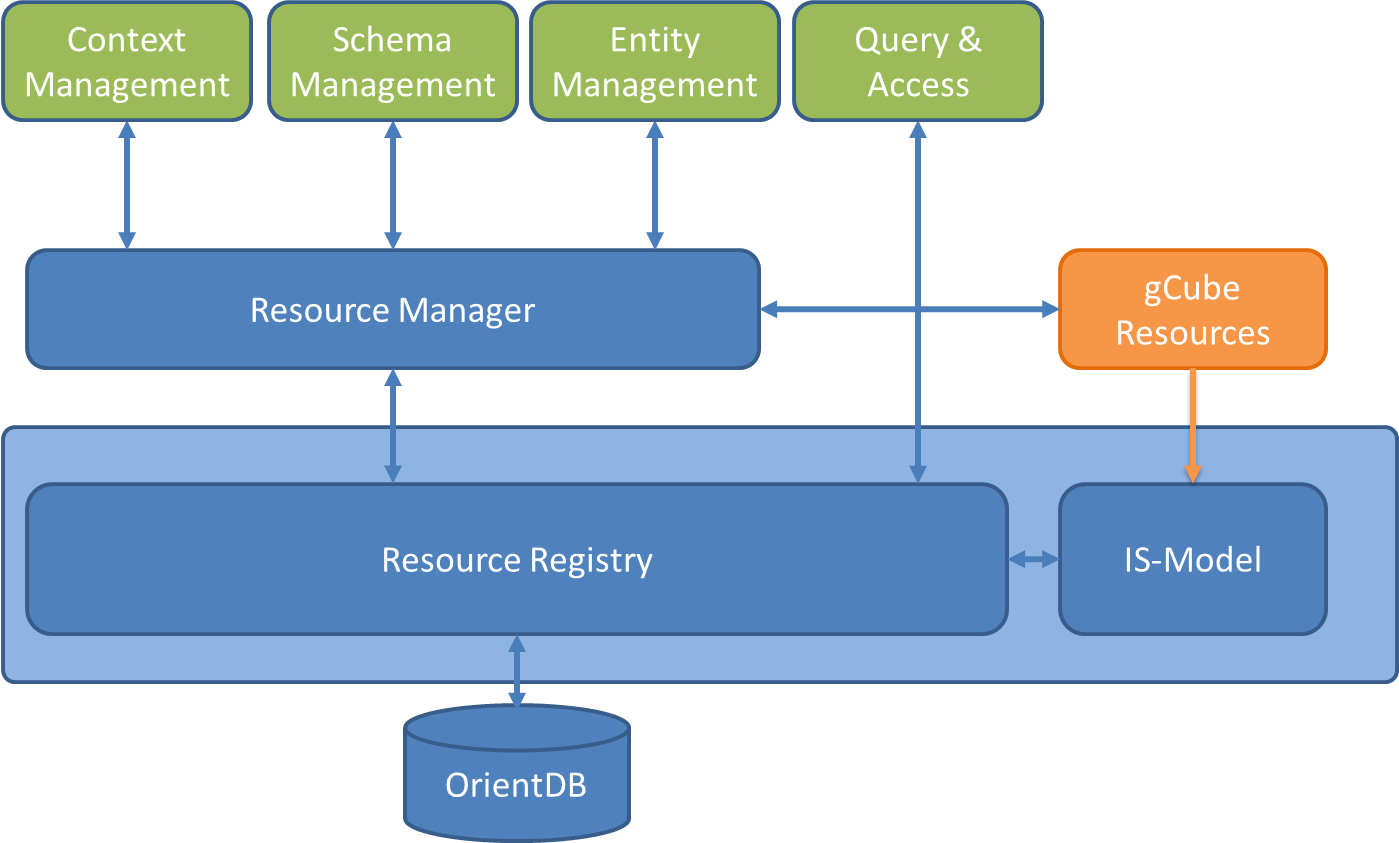Difference between revisions of "Information System"
From Gcube Wiki
Luca.frosini (Talk | contribs) (→Architecture) |
Luca.frosini (Talk | contribs) (→Architecture) |
||
| Line 48: | Line 48: | ||
* [[Information System Resource Registry | Resource Registry Client]] | * [[Information System Resource Registry | Resource Registry Client]] | ||
* [[Information System Resource Registry | Resource Registry Publisher]] | * [[Information System Resource Registry | Resource Registry Publisher]] | ||
| + | * [[Information System Subscription Notification]] | ||
* Backend Database (i.e. [https://orientdb.com/ OrientDB] as Graph Database) | * Backend Database (i.e. [https://orientdb.com/ OrientDB] as Graph Database) | ||
Revision as of 09:48, 3 November 2017
The gCube Information System (IS) has been designed to support Research Infrastructure federation.
Contents
Definition
The term ‘research infrastructures’ refers to facilities, resources and related services used by the scientific community to conduct top-level research in their respective fields, ranging from social sciences to astronomy, genomics to nanotechnologies https://ec.europa.eu/research/infrastructures/index_en.cfm?pg=about
IS: a registry of the infrastructure offering global and partial view of
- its resources (e.g. computing, storage, services, software, datasets);
- their current status (e.g. up and running, available);
- their relationships with other resources;
- the policies governing their exploitation.
Requirements
Functional Requirements
- Data Definition Language (DDL) for schemas definition (entities and relations);
- Entity and Relation instances must be:
- Univocally identifiable;
- Selective/Partial updatable;
- Validated against the Schema.
- Referential Integrity;
- Dynamic Query (no pre-define query);
- Standard Abstraction (desiderata);
- Subscription Notification Support.
Non-Functional Requirements
- High Availability (HA);
- Eventual Consistency;
- Horizontal Scalability;
- Multi-Tenancy, i.e. a single instance of the technology should be able to serve many “independent” contexts (between the same Application Domain) [1];
- EUPL licence compatibility of all its components.
Architecture
The constituent Components are:
- IS Model
- Information System Resource Registry
- gCube Model
- Resource Registry Client
- Resource Registry Publisher
- Information System Subscription Notification
- Backend Database (i.e. OrientDB as Graph Database)
Notes
- ↑ Please note that different Application domain must be managed by completely separated instances of the whole IS.
